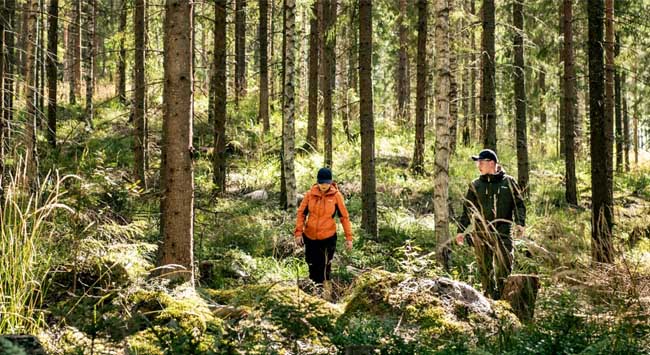Monday, December 18, 2023
|
Listen to this news
|

Metsa Group is exploring possibilities to construct a carbon capture facility at one of its pulp or bioproduct mills. The investigation is a continuation of the work initiated in the spring, in which Metsa Group and Fortum jointly studied the capture of wood-based carbon dioxide and its use in the chemical industry and hydrogen economy, for example.
According to Pirita Mikkanen, Metsä Group’s VP, Energy, wood-based carbon dioxide is a major production side stream in the forest industry, and it could be used more efficiently.
“Our cooperation with Fortum has given us good experiences of and greater insight into carbon capture. I believe we can use wood-based carbon dioxide emissions much more than we currently do. We see new cooperation opportunities with the chemical industry, among others.”
Carbon dioxide is used as raw material in the production of liquid fuels, various chemicals and plastic, to mention but a few examples. Wood-based carbon dioxide can be used to replace fossil carbon dioxide, and it is an important component in the hydrogen economy’s products like methane and methanol.
“Many of the hydrogen economy’s products are impossible to produce without carbon dioxide. We support the hydrogen economy in this respect,” Mikkanen says.
Metsa Group will now investigate how to best link the carbon capture facility to the company’s mill equipment. Carbon will be captured from the recovery boiler’s flue gases by washing the carbon dioxide into a reaction solution. Pure carbon dioxide can then be separated from the solution.
“Metsä Group now seeks to determine a solution that can be used to process the mills’ flue gases,” Mikkanen says.
The carbon capture process is supplied with water and energy from the mill, and the waste heat generated in carbon capture can be used in the mill’s processes. Matters now explored include the space required for the carbon capture facility, storage and liquefaction equipment and the best way to transport carbon dioxide to the upgrading facility. Safety at work and environmental impacts will also be examined, even before the actual environmental impact assessment.
Metsa Group’s surveys indicate that upgraders are interested in facilities that produce sufficient volumes of carbon dioxide. The recovery boiler of a pulp or bioproduct mill meets this criterion. Metsa Group has pulp mills in Rauma, Joutseno and Husum and bioproduct mills in Äänekoski and Kemi.
Read more news on Metsa Group
Tags: carbon capture facility, Metsa Group, wood, wood and panel, woodworking, woodworking UK
Comments: